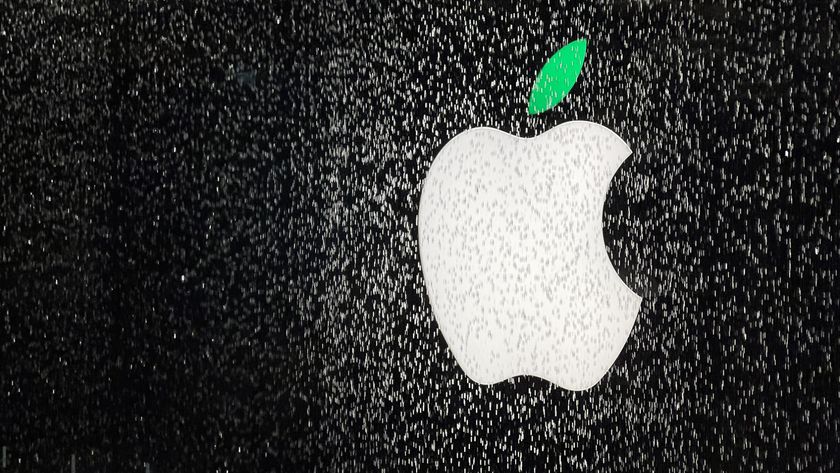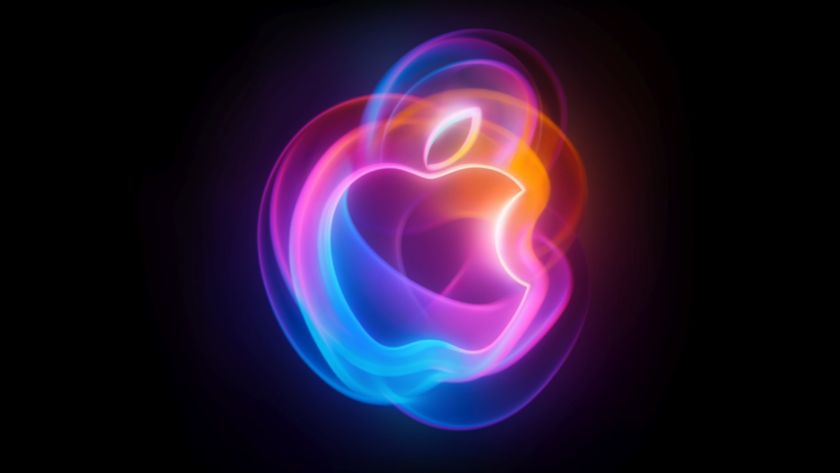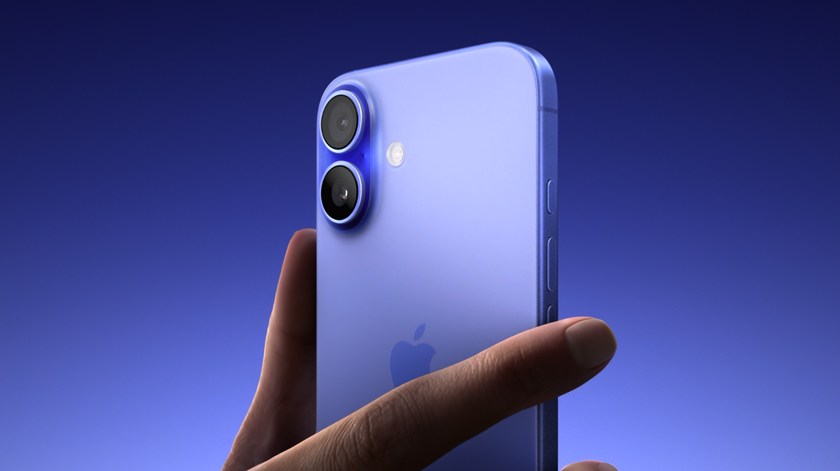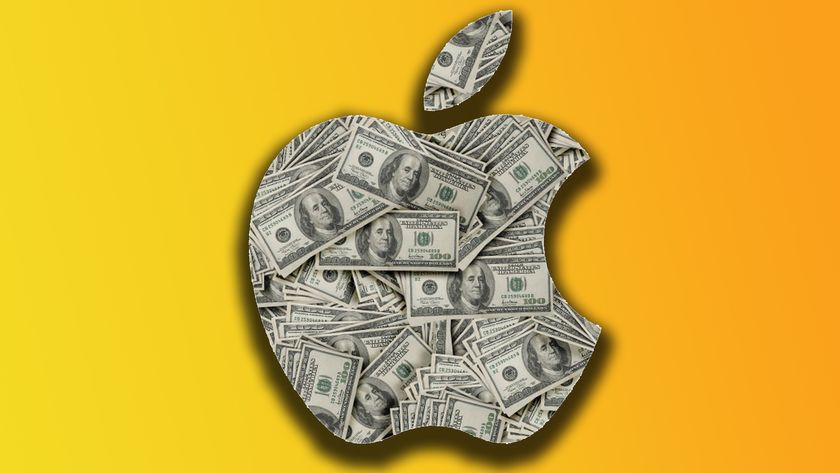WWDC 2015: Tim Cook's Apple and Eddy Cue's music


](/wwdc-2015)
In 2013 it was the radical redesign. In 2014 it was the functional revolution. This year it was more than pixels or bits. It was about showing what that redesign and functionality will enable for the future.
It was also about comedic bits and musical guests that proved far more divisive with the traditional audience than any new operating system or feature set ever has. And as much as everyone has spoken about the new Apple, that clash of culture will be a challenge for all of us.
Backstage
"Backstage" preceded the show. At almost 5 minutes long, it was slickly produced but a departure from the shorter, nerdier Siri-style intros or developer vignettes of year's past. It was a bold beginning but also a risky one — comedy is always hard but meta-comedy is even harder. There's a very fine line between laughing with a group of people and laughing at them. (Just ask Studio 60 on the Sunset Strip and The Big Bang Theory.)
I thought it was cute and clever in parts, and cringe-worthy in others. Some people liked it a lot more than I did, and some liked it a lot less. That's something that would continue to play out for the 2.5 hours to follow.
Apple's CEO, Tim Cook, took the stage to start things off, and to thunderous applause. Cook remains a unifying force for Apple, someone who brings smiles to the people in the crowd and at home alike. His role as Apple's moral center has only grown over the last few years, and the respect it's earned him is palpable. Yet this year that aspect was downplayed. There was no "we believe" or "only Apple" moments. There were still segments, notably privacy-releated, where both of those things were clearly on display, but it was more show rather than tell this year.
The baseball
After Cook gave us the show stats, he took a tangent. A baseball player had a career-highlight 100 home-run ball held for ransom, with the note demanding various Apple products for its release. Cook announced that Apple had paid the ransom, had the ball, and would be returning it to the player.
Master your iPhone in minutes
iMore offers spot-on advice and guidance from our team of experts, with decades of Apple device experience to lean on. Learn more with iMore!
On one hand it shows the cultural dominance and cachet of Apple's brand — all those baseball players and they wanted Apple Watch, MacBook Air, or iPad. It also gives sports fans a cross-over thrill. On the other hand, it interrupts the momentum of the keynote and leaves non-baseball fans confused. It was a short segment, but was it vital to the show or the message? That's a question my inner editor pondered several times as the hours marched on.
OS X El Capitan
Cook did what he's done a few times in recent years: skipped the state-of-the-company update by simply saying, "everything is going great." He didn't skip the setup though. We'd be getting news on OS X, iOS, and — stated right up front — native apps for watchOS.
Apple's senior vice president of software, Craig Federighi, came up to handle the first two. Federighi has only been doing keynotes for a few years but has rapidly accelerated to become one of the most energetic and engaging presenters in the industry And, for the most part, Apple making great use of him.
Federighi started off with a quick recap of OS X Yosemite, announcing a 55% adoption rate for the free update released last October. That might not sound like much compared to iOS adoption rates — more on that below — but compared to the adoption rate of Windows, it's stratospheric. It's also, according to Apple, the fastest adoption rate for any PC operating system ever.
The next version of OS X was then immediately positioned as not something new and different but as a refinement and advancement. Just like Snow Leopard was to Leopard, and Mountain Lion was to Lion, Federighi introduced OS X 10.11 as the tock to 10.10's tick.
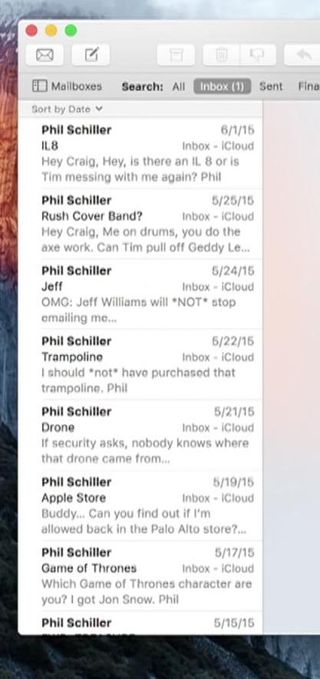
Here's where the comedy came back. Last year Federighi killed with a set on Apple's marketing team going on a tour to find the perfect name, including literal and figurative flirtations with OS X Weed. This year we got hot tubs, "free-bottom Fridays", and a mountain top MacBook-wielding guru.
Traditionalists bristle at moments like these, where Federighi's obvious connection with the audience may be over-used, or the desire for comedy over-indulged. Modernists love it. Personally, I liked last year's bit more than this year's because it was new and fresh at the time. It's really hard to do that with sequels.
Should Apple be above the baser humor? The answer to that will likewise vary from person to person. I think this is the type of segment Federighi delivers well, and they should bring more humor where and as it fits. And easter eggs like "unread mail from Phil Schiller" should never go away. Never.
The ultimate reveal was for OS X El Capitan. It's a bit of a mouthful, so it'll likely be truncated down to "El Cap" for casual usage. Federighi said its focus was experience and performance, and the audience really loved hearing that.
Although not to the degree of iOS, OS X has just gone through a design reboot and gained some matching functionality, so spending 2015 on smoothing everything out and tightening it up is a smart investment, especially considering where computing looks to be going next.
We've already called out our favorite OS X El Capitan features, but the focus on experience and performance is more than just Spotlight, new apps, new window-management, and Metal-on-Mac deep.
It's arguable whether Yosemite really had any more issues than any previous version of OS X — humans tend to feel present pain much more severely than past pain — but it was clear Apple hadn't been measuring the all of the important metrics, and that P1 (high priority) bug fixes and crash-reports alone can't quantify the overall feeling of software quality. Everyday frustrations also need to be fixed.
If the recent discoveryd rollback and WWDC's focus are any indication, Apple understands that much better now, and going forward engineers might just have the time they need to fix not just the crashers, but the annoyers as well.
Federighi didn't mention any of that on stage, nor would it be appropriate for the WWDC keynote, but the language he kept using implied as much, and he maintained that focus as he transitioned from desktop to mobile.
iOS 9
iOS 7 was a redesign that transformed rich texture into rich interaction, sharpened interfaces and typography to high-density, print-like precision, and laid the foundation for size-independent apps and devices. iOS 8 was a functional revolution that turned pull-based computing into push, unbundled apps into extensions, and moved from syncing data to providing continuity for activity. They were both big jobs and big deals. Like Yosemite led to El Cap, iOS 7 and 8 led to iOS 9
Federighi said elevating the foundations of the platform was the theme. That included further extending battery life, shoring up performance, and enhancing security. Increasing the intelligence of Siri and unifying it better with Spotlight, improving apps, and paying some long-needed attention to the iPad were also key.
We've also listed our favorite iOS 9 features, and I'll be talking a lot more about them soon enough, but just like OS X it was made clear externally and internally that Apple wasn't just rounding out but polishing up.
Highlights for me personally included the privacy-centric Siri, unified Spotlight, and iPad advancements — and the later-revealed iCloud Drive app — I'd long been advocating for.
Transit was also important to see, though it's starting out in relatively few places outside China (where data is far more uniform and agreements possible at far higher levels.)
The iOS 9 segment wasn't devoid of humor. Similar to last year's Messages bit with Greg Jozwiak, this year Federighi and Phil Schiller showed off Siri's new smarts with some Karaoke arranging fun. There's always a risk bits like that will go on too long or be too silly, but again, it's ultimately humanizing and keeps the presentations from become too dry and too drawn out. I'll leave you to tell me on what side you fall on for Viking Schiller and Elvis Cue...
Jennifer Bailey and Susan Prescott
WWDC 2015 featured two Apple executives on the keynote stage who also happen to be women. Jennifer Bailey, vice president of Apple Pay, and Susan Prescott, vice president of application product management.
It was long past time. Apple has had plenty of vice-presidents, directors, and product leads on stage in the past, and Apple is full of amazingly talented women. Those two groups should have crossed over far, far sooner than they did. As the world's leading technology company, and as a company that's positioned itself on the front lines of diversity and opportunity, it's simply untenable for Apple not to lead by example.
To those who insist on nitpicking relative performances, I'll just say this — presenting on stage, even with the amount of practice and preparation Apple puts in, is beyond hard. Both Bailey and Prescott did better than most their first time out. Craig Federighi famously went from hands shaking to superhero in the span of a year. He did that because he had the opportunity to do it, and giving more, and more diverse, people at Apple that opportunity benefits the company. More importantly, it benefits the billions of people watching the company, seeing themselves better reflected in the company, and dreaming of one day being on that stage for the company as well.
Years ago some of Apple's engineering departments realized that only if you had diversity in the process could you have diversity in the results. That should have filtered up faster, but the past is the past. We learn from it, and we do better. Apple, at WWDC 2015, started doing better.
Security and privacy
Apple and Tim Cook have made privacy and security table stakes. Federighi's summations throughout the OS X and iOS sections of the presentation served to reenforce this, but not everyone really understands what that means yet. It's also a gamble as to whether or not consumers at large will choose to care. Regardless, it's an important conversation to have.
When we pay with money, we see it leaving our wallet or account. When we pay with time, we see the clock ticking away. When we pay with data, we don't see our contacts and URLs or purchasing behavior drifting up into the cloud, and that lulls us into thinking "free" has no cost.
Apple is trying to point out it does, and putting the company's code where its policy is. That means doing things like walling off root access on the Mac, forcing TLS 1.2 with forward security for server connections, bringing operations down to the device instead of bringing data up to the servers, locking down Apple Pay, News, Intelligence, and other information not just from merchants and providers but from other Apple services, and more.
"Selling your data" is a misused and misunderstood term. More often than not our data is the factory, not the shipment, and our metadata the fuel, not the package. Yet holding that data rather than merely transiting it is a cost and does create risk, and if we're adverse to that cost and risk, we need alternatives.
Apple is the only major company currently providing that alternative right now, and everyone should be ecstatic about that.
App Store
Tim Cook came back out following the OS X and iOS portion of the event and showed a video, narrated by senior vice president of marketing, Phil Schiller, that highlighted how big and how important the App Store had become. The numbers, in a historic context, were staggering. It's also the kind of video, more than the sketches and jokes, that plays to the core of the developer community. There was no Chief Design Officer, Jony Ive, video this year. No new hardware or software redesign to warrant it, and no new Apple Store opening videos with or without Angela Ahrendts.
This was classic WWDC, aimed and fired right at developers, with a message all about how they have and can continue to change the world. And it all prefaced a big part of what Apple is bringing next — native watch apps.
watchOS 2.0
Yes, watchOS. Lowercase watch like lowercase i in iOS. (though with an icon nowhere nearly as nice looking). Nine months post-introduction but only six weeks post launch, the Apple Watch is getting iterated. Vice-president of technology, Kevin Lynch, once again handled the presentation.
Much of what was announced was either the completion of features already slated for the Watch, including the return of the Photo and Time Lapse clock faces, the expansion of TimeTravel from Solar and Astronomy to the more complication-heavy faces, or features needed for parity with iOS 9, like Apple Pay, Maps, and Siri. That's not to say they're minor but to highlight how mature the Apple Watch already is as a product. (The expansion of the Friends interface made my wish list especially happy.)
Even though they'd been pre-announced from the start, Native apps remained the biggest news. They move the logic for Apple Watch apps from the iPhone and onto the Watch itself, alongside the interface. They're still meant to be companions rather than stand-alone experiences, but now they're going to be much better performing, much higher potential companions.
The new version of watchOS is also bringing with it ClockKit, which allows for third party complications. Those may just be more exciting than native apps. There was also a bedside mode and the ability to respond to mail messages right from the watch.
More a completion of the current roadmap than the beginning of next one, given the hardware just launched, it was exactly the right thing to do for now. WatchKit got developers to understand the constraints of the wrist, and now WatchKit 2.0 can take that understanding and provide for even better apps.
Apple Music
With about 20 minutes left, the developer and device-centric keynote ended, and the music one took over. Depending on your point of view, that was either hip and fresh... or a total disaster. That there is a split of opinion on this is what's led me to think and rethink so much about WWDC 2015.
I'm not very fussy about music. I like almost all kinds, listen when it's on, but don't often go out of my way to find it. I don't subscribe to any streaming services and don't buy much music any more. (I watch a ton of video instead.)
I'm capable of enough perspective taking, however, to realize I maybe shouldn't be the one judging what's good or bad when it comes to music these days. That may be why I didn't react with either hate or love for the Jimmy Iovine, Trent Reznor, Eddy Cue, or Drake segments, for Apple Music, Beats1, and Connect, or for the The Weekend at the end. But almost everyone else I saw and spoke with did.
Jimmy Iovine is a music industry legend, not a typical Apple presenter. People who like Apple presenters did not like Jimmy Iovine. And they hated Drake. Yet others, those who cover entertainment and music or general culture, liked Iovine and Drake a lot.
Same with Connect. Some called in "Ping 2", but others, those who are into producing music, were either cautiously optimistic, or very much interested in it.
What's clear is that the Apple Music segment, objectively, broke the rhythm of the show. It was slower paced and it felt less polished and focused.
There was some pushback on Tim Cook using the sacred "One more thing..." line for Apple Music. He'd used it before for Apple Watch, and that was big enough no one batted and eye. Music should have been big enough as well—it's part of Apple's DNA—but again the execution let the subject matter down.
I am I'm looking forward to my three month trial of Apple Music. I don't see myself using Connect, but I also see that as myself, not any indication of how others will feel about the service. I do see myself liking the streaming a lot. All those songs, always available, has huge appeal to me. Beats1... I have no idea. I'll have to listen and figure it out. (I do look forward to Beats1 running 24/7 from WWDC 2016, though!)
The crossroads
There's no getting around it — the WWDC 2015 keynote was the most strangely divisive I've experienced. There's always been a challenge in programming WWDC, given that the room is filled with developers, but a world of customers is watching. Every moment becomes a balancing act. Too technical and the audience watching the stream might get lost. Too flashy and the people in the seats might feel abandoned. This year it was the latter. A lot of the humor and most of the music fell flat for many of the people at the show and in the media.
Some felt it was padded, or that music was drawn out. Given how much wasn't even mentioned, however, like Safari View Controllers, the iCloud Drive app and mail attachments, TestFlight updates, text replies for third-party notifications, HomeKit management in Settings, NSCollectionView, content blockers, app slimming and easier upgrades, and much, much, more, it's hard to make that argument.
The WWDC keynote isn't a session, it's a show.
The WWDC keynote isn't a session, it's a show. It simply can't be all operating systems and features, SDK and API. There has to be a rhythm. There has to be substance but also has to be fun. It's getting that fun to enhance rather than distract from the substance that's the tricky part.
I think the key might be in how Apple has always viewed products. "A thousand nos for every yes' is a true for bits on stage as it is bits on devices. Saying "no", even to executives and partners who think they know better than audience reaction reveals, would make the ones they do say "yes" to even stronger and more impactful. Like music, the individual notes matter, but so does the whole song.
And only Tim Cook, and maybe Phil Schiller, can do that.
The bottom line
Those who felt Apple had moved too fast in previous years got the focus on stability they were craving, but not at the expense of continuing to move forward. Those who felt Apple had fallen behind on machine learning got to see how smart our data could be while remaining safely on-device.
Those who called Apple out on diversity got to see outstanding women take the stage. And those who'd been wondering how Apple would tackle music in a post-download world got their answer.
There were no radical redesigns or fundamental functional changes at WWDC 2015. There was no race for developers to figure out how they would have to redo their apps to strip away textures, add Auto Layout or TextKit, implement size classes or extensions. This year, if they'd done all that, they got their reward — San Francisco as the new system font, multi-window multitasking on the iPad, search APIs.
They got a future that's starting to come to them.

○ WWDC 2015 hub
○ iOS 9 hub
○ OS X 10.11 hub
○ Apple Watch hub
○ Swift hub
○ Discussion forums

Rene Ritchie is one of the most respected Apple analysts in the business, reaching a combined audience of over 40 million readers a month. His YouTube channel, Vector, has over 90 thousand subscribers and 14 million views and his podcasts, including Debug, have been downloaded over 20 million times. He also regularly co-hosts MacBreak Weekly for the TWiT network and co-hosted CES Live! and Talk Mobile. Based in Montreal, Rene is a former director of product marketing, web developer, and graphic designer. He's authored several books and appeared on numerous television and radio segments to discuss Apple and the technology industry. When not working, he likes to cook, grapple, and spend time with his friends and family.

